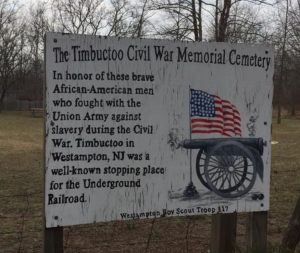|
|
Photo: Rutgers University |
Location: Westampton Township, Burlington County, New Jersey, United States
“Timbuctoo [New Jersey] was founded by freed blacks and escaped slaves in the 1820s. It was probably named after Timbuktu, the town in Mali near the Niger River, Although researchers are still trying to find out how and why it got its name. The neighborhood still exists in the township of Westampton, N.J., about a 45-minute drive northeast of Philadelphia, an enclave of many acres, so tiny and tucked away that when you ask someone at the store two miles away, he tells you he has no idea where it is. Timbuctoo has always been a secret kind of a place. Had to be, because it was part of the Underground Railroad. There are newer houses here now where some descendants of original settlers still live. But much of the physical history of Timbuctoo is buried underground. Based on a geophysical survey, archaeologists believe that foundations of a whole village of perhaps 18 houses and a church dating back to the 1820s lies beneath layers of dirt…” DeNeen Brown Washington Post Tuesday, August 3, 2010
“Over 15,400 artifacts are being curated, analyzed and cataloged from a Temple University excavations at the site of Timbuctoo, a now buried village of freed and runaway slaves along the Rancocas creek, in Burlington County, NJ. ….The village founded starting around 1825 may have been home to as many as 125 African American Families. It was occupied until the mid-20th century. According to historic deeds the site may have encompassed as many as 40 acres. The village was an important stop along the Underground Railroad. The site cemetery is now the only above ground feature of the site, among the graves are tombstones of 13 members of the U.S. Colored Troops who fought in the Civil War. Surveys indicated that about 70 people were buried in the cemetery. It is also known as the location of the 1860 Battle of the Pine Swamp, where the village defended a black man against a slave catcher and dozens of helpers….” https://www.archaeologicalconservancy.org/
Scenes from Global Timbuctoo Conference, Rutgers University, 2019
“This Rutgers project brings together a range of specialists, including international Islamic scholars working to preserve the scholarly heritage and rich libraries of Timbuktu; archeologists engaged in excavation projects in Mali, New York, and New Jersey; and historians of African and African American history.
The project includes: a professional development workshop for New Jersey teachers; a “Student to Student” SKYPE project for New Jersey and Malian students; the visit of a Malian secondary school teacher to New Jersey and New York area schools; an exhibit – “Dreaming of Timbuctoo”- on the New York State settlement; and an international symposium at Rutgers University and Burlington County, New Jersey involving scholars and other specialists from Mali, South Africa, and the U.S.” https://ruafrica.rutgers.edu/
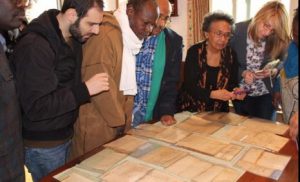 |
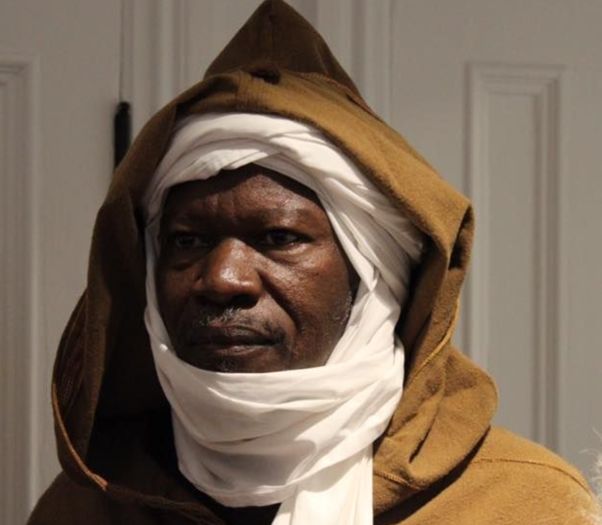 |
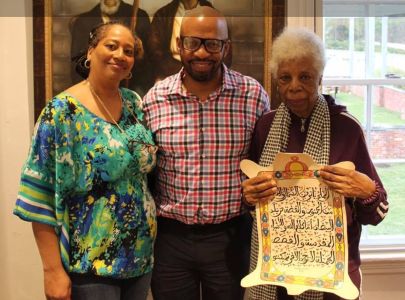 |
| Participants: Global Timbuktu Conference, Rutgers University | Guy Weston, Descendant of one of founders of Timbuctoo, New Jersey Global Timbuktu Conference, Rutgers University | |
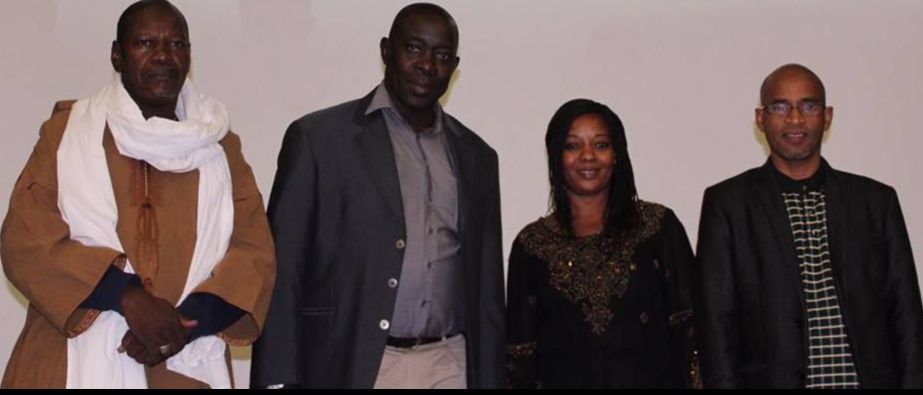 |
||
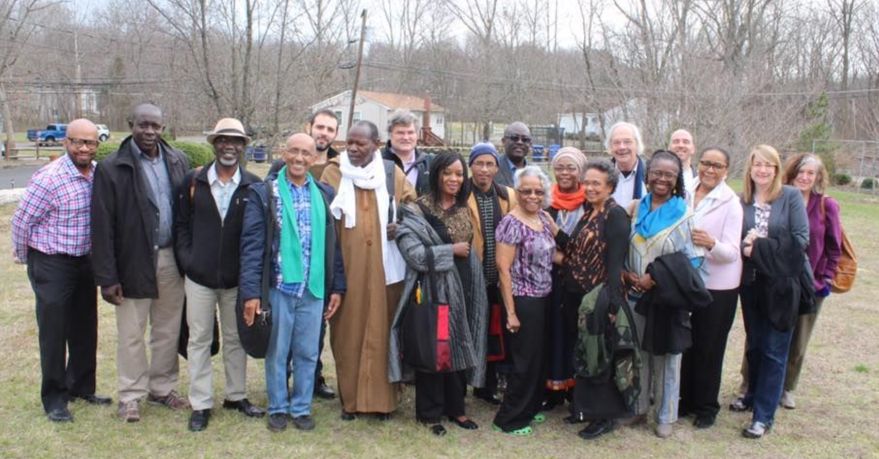 |
||
Resources
Timbuctoo, N.J. Timbuctoo Historical Society. https://timbuctoonj.com/ Accessed 10/2/2020.
“Artifacts of former slaves’ village tell historic tale.” Archeological Conservancy. https://www.archaeologicalconservancy.org/
Brown, DeNeen. “Black History Unearthed in Timbuctoo, NJ.” Washington Post 8/3/10 The Root. https://www.theroot.com/ Accessed 10/7/2020.


